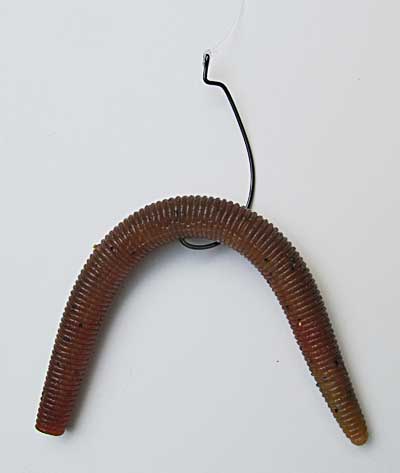
Although anglers outside the sport of largemouth bass fishing often laugh when they see “wacky rigs”, these special rigs are no joke. This simple setup consists of a soft plastic worm body impaled or affixed to a hook like a hot dog on a stick. The wacky rig is most often associated with Senko worms or other stick baits.
Wacky Rig Variations
Anglers employ a variety of hooks for wacky rigs. Standard worm hooks are popular, either plain or weedless. Anglers have also reported success when using circle hooks for wacky rigs. Most versions are rigged simply by piercing the worm body at its mid-section.
A slightly more complex variation uses a small automotive type o-ring to secure the worm to the hook without piercing it. Worm bodies tend to last longer using the o-ring method, although some bodies are still lost.
For fishing deep structure or fast currents, anglers sometimes add a small amount of weight to the rig. Wacky rigs are sometimes used in conjunction with inline weights, rigged either Texas or Carolina style. Other setups utilize built in weight on the hook.
Wacky Rig Techniques
Wacky rigs are used to catch trophy bass in a variety of habitats. They can be casted into heavy cover, skipped across the surface of water, or jigged over productive bass structure.
A common situation where wacky rigs are called for occurs when bass are located among vegetation or debris very close to the shoreline. In these situations, the weedless wacky rig is one of the few lures that can be fished successfully without snagging.
In lakes where weed beds totally overwhelm anglers, wacky rigs offer an alternative. They can be casted into openings and allowed to sink. Strikes often come within microseconds of the worm hitting the water. If fish do not bite, the rig can be quickly skipped across the water until free from vegetation.
Another application for the wacky rig occurs during the winter when bass are located just off the bottom. During these periods when bass are slow to react, wacky rigs can be casted and allowed to slowly sink to the bottom. As the boat drifts along, the rig is slid very slowly along the bottom. This slow-motion action is said to draw strikes from sluggish bass when other lures fail.